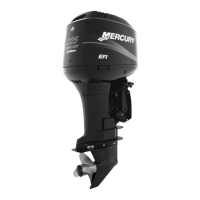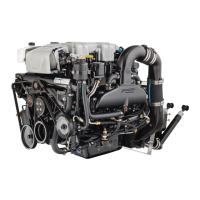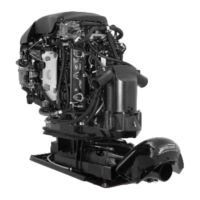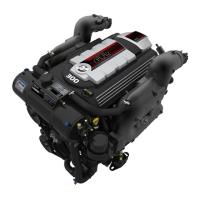IGNITION
Page 2A-28 90-883728 JULY 2001
Troubleshooting
The ECM is designed such that if a sensor fails, the ECM will compensate so that the en-
gine does not go into an over-rich condition.
Disconnecting a sensor for troubleshooting purposes may have no noticeable effect.
Troubleshooting Without Digital Diagnostic Terminal
Troubleshooting without the DDT is limited to checking resistance on some of the sen-
sors.
Typical failures usually do not involve the ECM. Connectors, set-up, and mechanical wear
are most likely at fault.
• Verify spark plug wires are securely installed (pushed in) into the coil tower.
• The engine may not run or may not run above idle with the wrong spark plugs installed.
• Swap ignition coils to see if the problem follows the coil or stays with the particular
cylinder.
NOTE: ECMs are capable of performing a cylinder misfire test to isolate problem cylin-
ders. Once a suspect cylinder is located, an output load test on the ignition coil, fuel injec-
tor and direct injector may be initiated through use of the DDT.
• Any sensor or connection can be disconnected and reconnected while the engine is
operating without damaging the ECM. Disconnecting the crank position sensor will
stop the engine.
IMPORTANT: Any sensor that is disconnected while the engine is running will be
recorded as a Fault in the ECM Fault History. Use the DDT to view and clear the fault
history when troubleshooting/repair is completed.
• If all cylinders exhibit similar symptoms, the problem is with a sensor or harness input
to the ECM.
• If problem is speed related or intermittent, it is probably connector or contact related.
Inspect connectors for corrosion, loose wires or loose pins. Secure connector seating;
use dielectric compound 92-823506-1.
• Inspect the harness for obvious damage: pinched wires, chaffing.
• Secure grounds and all connections involving ring terminals (coat with Liquid Neo-
prene 92-25711--3).
• Check fuel pump connections and fuel pump pressure.
